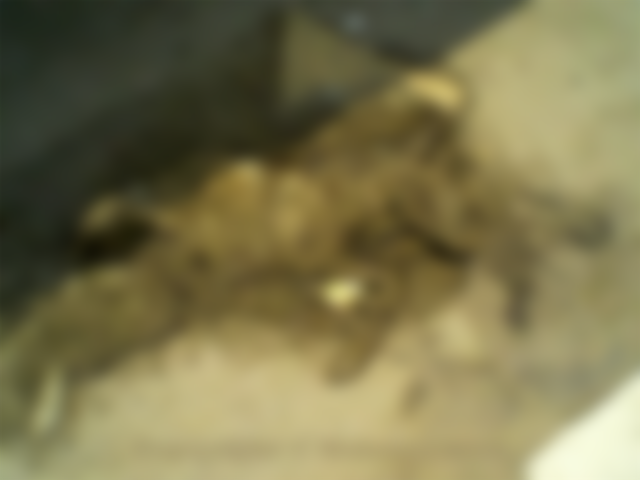This is the third and last article of my ongoing series about the Canines of Egypt, Mythical & Real. The two previous ones were "Anubis" and "Other Dog-like Deities of Egypt: Wepwawet, Khentymentiu & Sothis". This time we will discuss real dogs in Egypt, past and contemporary.
Pharaoh Hound & Ancient Egyptian Dogs
Pharaoh Hound is a breed that has developed in a number of islands in the Mediterranean, in particular Malta and Sicily. It is believed that it was brought to the islands by the Phoenicians and had been taken from Egypt. That it would ultimately come from Egypt is a theory based on dogs of similar appearance being depicted in Egyptian tombs. Other breeds that possibly originate from Ancient Egypt are Greyhound, Saluki, and Whippet.
The ancient Egyptians definitely had domesticated dogs. That is proved by skeletal finds from 4000-4500 BC, as well as images from pre-dynastic time onwards. It was also customary to mummify and bury dogs with their owners. The dogs were used in hunting, as watchdogs and for military purposes.
In the ancient Egyptian language, the word for dog was “iwiw”, which was probably onomatopoetic, an attempt to describe the dog's barking.
The oldest domesticated dog whose name is known is “Abutiyu”. He lived in Egypt some time between 2345 and 2280 BC. It is believed that he was a royal watchdog. Abutiyu was given a ceremonial funeral in Giza, but it is not known to which Pharaoh he belonged.
Over 8 million (!) dog mummies have been found in Saqqara, south of Cairo. The finding is still incompletely explored.
Whippet
The origin of the breed Whippet is far from clear. One story says that it is a cross-breed between terrier and Greyhound, created in Britain about 200 years ago to obtain a good race dog. There are, however, whippet-like dogs depicted on ceramics from ancient Greece. Based on this fact, C. H. Douglas Todd, in his book "The Popular Whippet," suggests another theory, that the Whippet may have existed as early as in the Graeco-Roman period. I think it's possible that it existed even earlier than that.
In etymology, the word "whippet" is not usually traced very far. Sometimes it is said that it is based on the English term "Whip It". On the other hand, it is also possible that "whippet" is derived from ancient Egyptian Wepwawet (Upuaut). But etymology is a difficult art which rarely leads to more than plausible guesses - especially when you get really far back in time.
Egyptian Dogs Today – Dogs & Islam
Egypt has millions of stray dogs, and police and army use working dogs - however, having dogs as pets is rare in contemporary Egypt, even if it does occur.

There is a widespread perception that the dog is an impure animal. It has to do with Islam, or maybe I should say that people think it has to do with Islam. The perception has been repeatedly challenged by prominent Islamic scholars, including former Grand Mufti (2003-2013), Ali Gomaa. He claimed in Egyptian television that dogs are not impure and that there is nothing wrong to have them at home or indoors. However, they should not be allowed to be on the area used for prayer.
Earlier Grand Imam at al Azhar (1958-1963), Sheikh Mahmud Shaltut, also claimed that dogs are not ritually impure - and another previous Grand Mufti (1996-2002), Sheikh Nasr Farid Wasil, said the same thing.
The Prophet Mohammed himself is known to have been very kind to animals and, among other things, to have taken care of puppies.
Stray Dogs
At night, the streets of Cairo, and most other Egyptian cities, towns and villages, are ruled by stray dogs. They are there during the day too, it is impossible not to see them, but they tend to stay calmer during the day, often lying dormant in the shade somewhere. They are everywhere and their number can be counted in millions. There is a small risk of rabies so you should not be careless, but they rarely attack people. In general they give way if you come walking, although it is not unheard of that dogs has attacked people. However, they fight among themselves, especially at night, and the sound of their fights is often heard during the night hours.

They often fight to the death - and some are probably hit and die in traffic fatalities. Things like this can be found on the streets. They sometimes remain until they are annihilated.


The stray dogs look very similar to the jackals of the desert (which in reality are not jackals at all, but a form of wolves).

Copyright © 2020 Meleonymica/Mictorrani. All Rights Reserved.
The photos are mine and Copyright © Meleonymica, All rights Reserved.
Lead image by Simon Berger/Unsplash, Public Domain.
All my articles about Egypt and Egyptology can be found here.
Interested in history, legends and myths, join my community History, Myths, Legends & Mysteries (be45).
You find all my writings on Read.Cash, sorted by topic, here.





What we have here is askal haha..